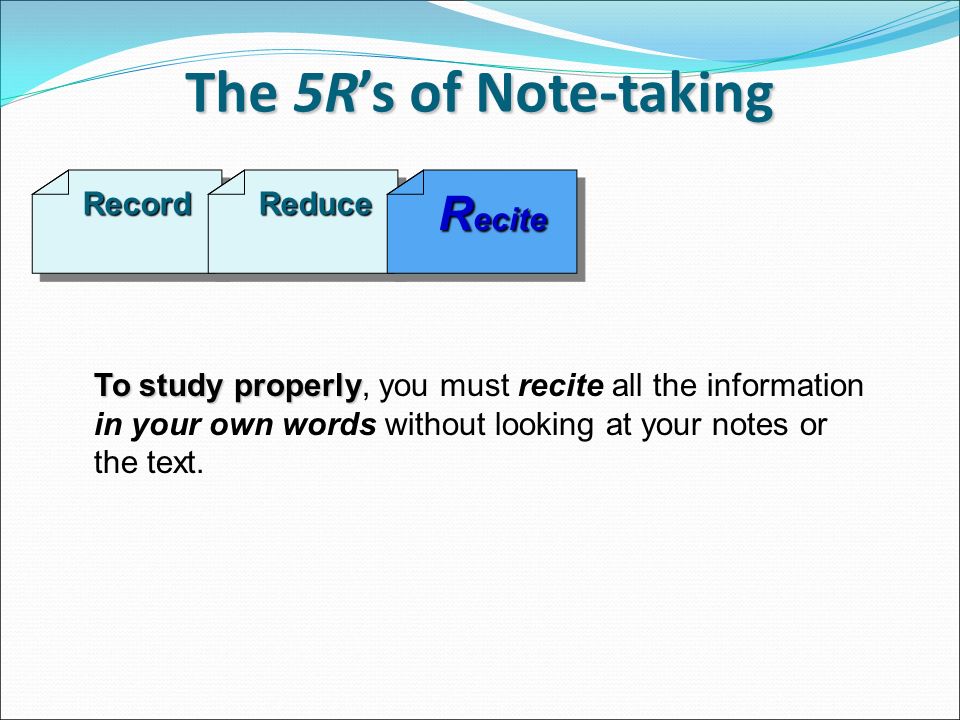5 R Note Taking


Note taking Great note taking takes practice. You have to find a method that works for you, and that may change depending on the class that you’re taking (for example, a science class versus a humanities class). Here are 5 methods that are proven to be successful. Read over each one and decide if there’s one that might work for you. This involves not only good note taking skills during class, but also adequate preparation and review outside of class. In this module, we will examine the following areas: Taking Notes in Class, Effective Listening, and the Five R's of Note taking.
Here is an easy way to remember the most important points of note-taking:

Record: During the lecture, write all meaningful information legibly.
Reduce: After the lecture, write a summary of the ideas and facts using key words as cue words. Summarizing as you study helps to:
- Clarify meanings and relationships of ideas
- Reinforce continuity
- Strengthen memory retention
- Prepare for exams in advance
Recite: To study properly, you must recite all the information in your own words without looking at our notes or the text.
Reflect: Think about your own opinions and ideas as you read over your notes. Raise questions, then try to answer them creatively. Record original ideas in your notebook and review them regularly. Use your creative ideas when answering exam questions, in classroom discussions, and when writing papers.
Review: Before reading or studying new material, take ten minutes to quickly review your older notes. Skim over the main ideas and details. Review enhances your retention of old material while adding new material to your memory.

- Pauk, W. (1989). How to Study in College (4th Ed.). Boston, MA: Houghton Mifflin.
5 R's Of Cornell Note Taking Method
5 R Note Taking
return to top previous page next page